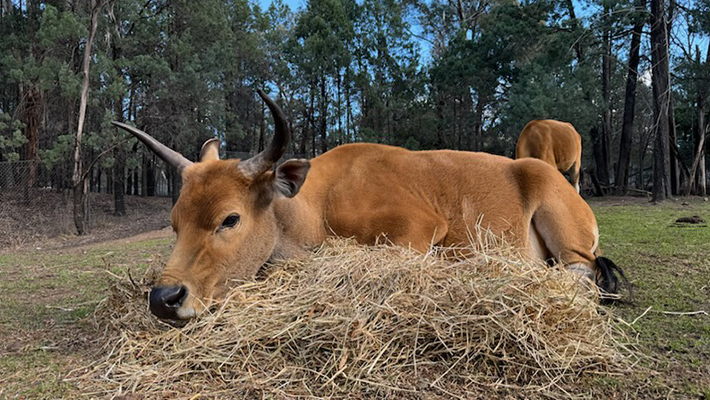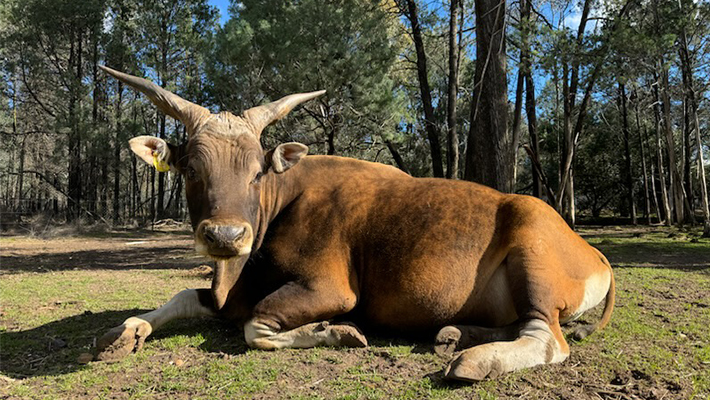Posted on 07th August 2024 by Media Relations
Keepers are celebrating the Banteng this Sunday at Taronga Western Plains Zoo
Also known as the Tembadau, the Banteng is a species of wild bovine found in Southeast Asia.
Banteng are known for their white stockings and rump, with males being much darker in colour than females and young. Both males and females have horns, but male Bantengs’ horns are much longer and grow up instead of curving in at the ends.
Historically, Banteng were widespread in the Southeast Asian mainland, including the southwestern areas of China and north-eastern India, extending to Borneo, Java, through the Malaysian Peninsular and into the Island of Bali.
They live in herds made up of between two and 40 individuals, with each herd having only one breeding bull.

Banteng prefer drier, grassland habitats generally, but move to forests and bamboo jungles during monsoon season. They are herbivores and feed on mainly on grass, bamboo, and leaves. As large grazers, the Banteng play an important role in their ecosystem by regularly disturbing the plant life, making way for new plants, and composting nutrients for the soil.
Banteng are protected however a large illegal trade still exists and they are illegally hunted for their meat, pelt, and horns, which are valued as trophies. Banteng also face a rapid loss of habitat due to human expansion and agriculture. Most wild Banteng are confined to protected areas. The island of Java is the most important area for wild Banteng conservation, with the largest populations residing in Ujung Kulon National Park or Baluran National Park.

Due to their genetic similarity, Banteng are able to breed with domestic cattle, which leads to a loss of valuable genetic material and hybridisation. The close relation with domestic cattle also unfortunately means Banteng are susceptible to diseases and parasites carried by domestic animals.
Taronga Western Plains Zoo is currently home to a herd of six Banteng. The Zoo first acquired Banteng in 1981 as part of the regional breeding program, and has since produced a number of calves who have moved to other institutions in the region to further the genetic diversity of the Australasian population and become ambassadors for their wild cousins.
Learn more about Banteng at a special Banteng Keeper Talk this Sunday 11 August 2024 at 12.30pm.